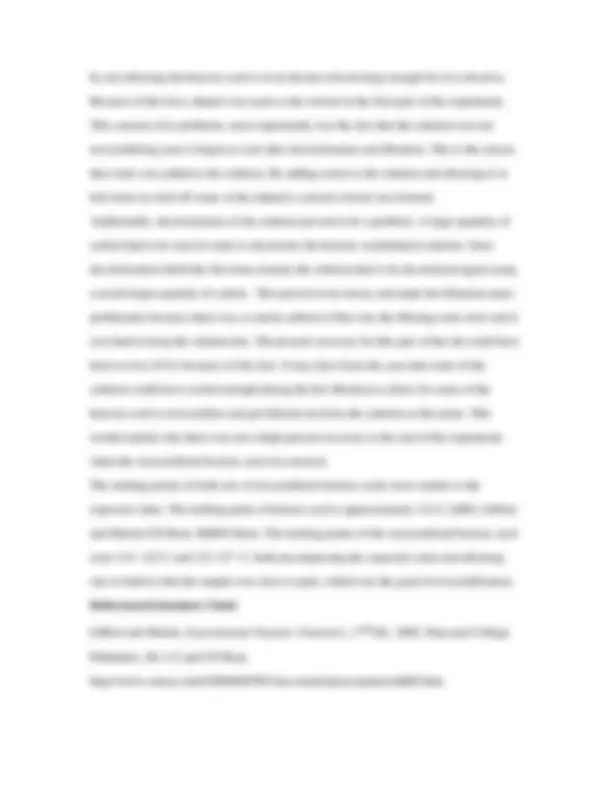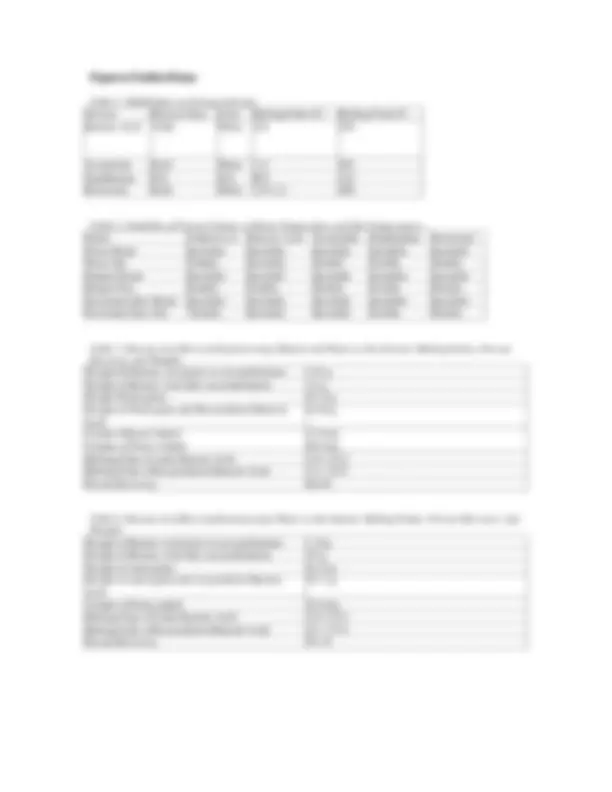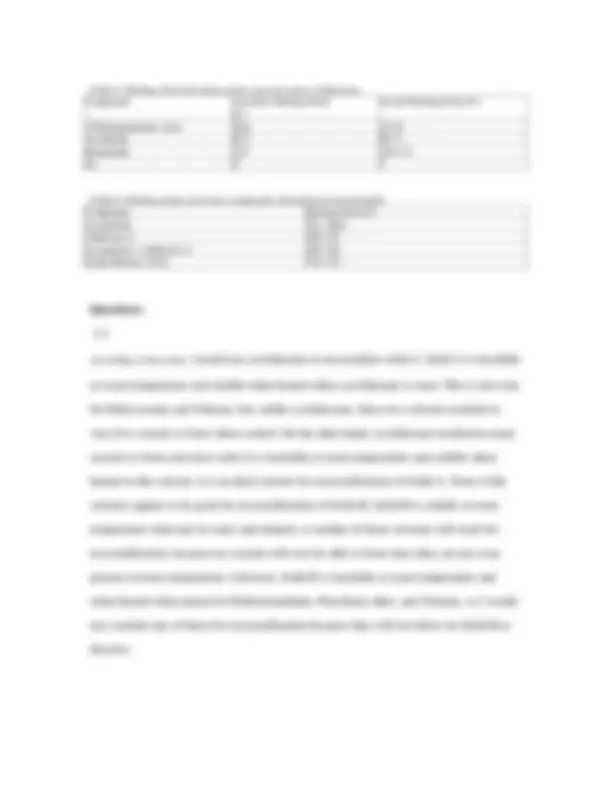





Study with the several resources on Docsity

Earn points by helping other students or get them with a premium plan


Prepare for your exams
Study with the several resources on Docsity

Earn points to download
Earn points by helping other students or get them with a premium plan
Community
Ask the community for help and clear up your study doubts
Discover the best universities in your country according to Docsity users
Free resources
Download our free guides on studying techniques, anxiety management strategies, and thesis advice from Docsity tutors
By using g 95% ethanol and water, benzoic acid can be recrystallized
Typology: Lab Reports
1 / 6

This page cannot be seen from the preview
Don't miss anything!




Table 1: MSDS Data on Various Solvents Solvent Physical State Color Melting Point (C) Boiling Point (C) Benzoic Acid Solid White 122 249
Acetanilide Solid White 114 304 Naphthalene N/A N/A 80.5 218 Resorcinol Solid White 110-113 280
Table 2: Solubility of Various Solutes at Room Temperature and Hot Temperatures Solute Unknown A Benzoic Acid Acetanilide Naphthalene Resorcinol Water Room Insoluble Insoluble Insoluble Insoluble Insoluble Water Hot Soluble Insoluble Soluble Soluble Soluble Ethanol Room Insoluble Insoluble Insoluble Insoluble Insoluble Ethanol Hot Soluble Soluble Soluble Soluble Soluble Petroleum Ether Room Insoluble Insoluble Insoluble Insoluble Insoluble Petroleum Ether Hot Soluble Insoluble Insoluble Soluble Soluble
Table 3: Benzoic Acid Recrystallization using Ethanol and Water as the Solvent: Melting Points, Percent Recovery, and Weights Weight Of Benzoic Acid prior to recrystallization: 1.01 g Weight of Benzoic Acid after recrystallization: .41 g Weight Watch glass: 44.24 g Weight of Watch glass and Recrystallized Benzoic Acid:
44.65 g
Volume Ethanol Added: Volume of Water Added:
12.0 mL 20.0 mL Melting Point of crude Benzoic Acid: 118-122 C Melting Point of Recrystallized Benzoic Acid: 114-122 C Percent Recovery: 40.6%
Table 4: Benzoic Acid Recrystallization using Water as the Solvent: Melting Points, Percent Recovery, and Weights Weight of Benzoic Acid prior to recrystallization: 1.10 g Weight of Benzoic Acid after recrystallization: .87 g Weight of watch glass: 44.24 g Weight of watch glass and recrystallized Benzoic Acid:
45.11 g
Volume of Water added: 35.0 mL Melting Point of Crude Benzoic Acid: 118-122 C Melting Point of Recrystallized Benzoic Acid: 121-127 C Percent Recovery: 79.1%
Table 5: Melting Point deviations from expected value. Calibration Compound Literature Melting Point (C)
Actual Melting Point (C)
3 Phenylpropionic Acid 48.6 43- Acetamide 82.3 69- Benzamide 133 103- Ice 0 3
Table 6: Melting points of various compounds determined experimentally. Compound Melting Point (C) Acetanilide 101-106. Unknown A 100- Acetanilide + Unknown A 100- Crude Benzoic Acid 118-